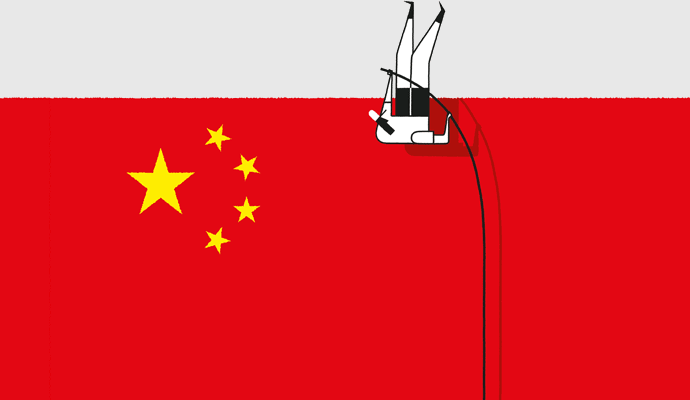Will China’s New Leaders Step Up to the Plate?
The world is watching as the Chinese Communist Party Congress meets to discuss reform.
China watchers have been eagerly anticipating the Third Plenum of the 18th Chinese Communist Party Congress, which kicked off on November 9. President Xi Jinping and Premier Li Keqiang will reveal their plans for reform, following a year of negotiations with other party leaders. Perhaps the most famous third plenum to date took place in 1978, when the new leadership team under Deng Xiaoping made its momentous decision to open up China to the world. Those reforms ushered in 30 years of unprecedented development.
More recently, however, it has become clear that the economic growth engine that has powered China over the last 30 years is broken beyond repair. Understanding why boils down to the three major factors that determine a country’s potential economic output and growth rate: the size and composition of its labor force, its capital endowment, and its technological progress.
The economic growth engine that has powered China over the last 30 years is broken beyond repair.
When reforms first got underway in the late 1970s, China was still an agricultural society, with the vast majority of its population eking out a subsistence existence in countless small villages. From such a low base of economic activity, it was relatively easy to make tremendous progress by encouraging surplus farm laborers to migrate to urban areas and work in low-skilled manufacturing jobs to produce exports for the rest of the world—while simultaneously trading off access to China’s 1.3 billion potential new customers against the transfer of Western capital and know-how. The resulting inflow of capital was used to finance massive investments in, for example, new infrastructure development, as well as building up a huge hoard of foreign exchange reserves as protection against unanticipated economic shocks, such as the 2008 financial crisis.
But today these strategies are rapidly running out of steam. First, China’s demographic dividend will soon become a burden. The country’s working age population will decline after 2015, in part due to its controversial one-child policy. Its supply of surplus migrant labor is shrinking rapidly, driving up wages and forcing some manufacturing activity to migrate to other even lower-cost countries, such as Vietnam. And as China closes in on the global productivity frontier, the potential for simple catch-up growth is diminishing. The country has to become truly innovative.
As a result, to maintain the double-digit economic growth rates of the past, China would have to significantly increase its capital investment rate, which would be risky, given its already high debt levels, industrial overcapacity, and relatively low rates of capital efficiency in general. In addition, there must be demand somewhere for all that output and, here too, the tide is turning against China. It has achieved such dominant positions in many sectors that export growth rates would decline even if its main export markets, such as Europe, weren’t experiencing severe economic challenges. And even though, contrary to the conventional wisdom, private consumption is, in fact, growing at an impressive rate, it is nowhere near large enough to compensate for the decline in the other major growth drivers.
So what can China do? Are the doomsayers correct—is China about to implode? I would argue no, but it’s clear that the country’s leaders need to take decisive action over the next three to five years or risk long-term stagnation:
1. Slow down. Further investment-led growth will only exacerbate China’s financial, environmental, natural resource, and other problems. The key is mitigating the impact of a slowdown (for example, overcapacity and unemployment), while adjusting domestic GDP growth expectations.
2. Clean up. Although highly successful, China’s growth model also produced numerous negative side effects, including endemic corruption, rising inequality, safety issues, and severe pollution and environmental degradation, that must now be addressed urgently.
3. Implement structural reforms. The government must shift from direct intervention toward facilitating China’s ongoing transition to a market-based economy. Necessary steps include changing local government incentives and budgets, improving SOE governance, increasing competition, and, over time, commercializing the banking system, liberalizing interest rates, and opening up the capital account.
4. Stimulate domestic consumption. Chinese consumers are actually spending at a healthy rate, but much more must be done to free up latent disposable income, for instance, by improving social services such as pensions and health and unemployment insurance; implementing hukou (household registration) and land rights reform; and further developing the services sector, which will offer new jobs and raise the country’s disposable income levels.
5. Upgrade the industrial base. China must become more competitive in higher value-added industries through top-down policy initiatives that focus on, for example, indigenous innovation and education, and bottom-up firm-specific initiatives such as developing sophisticated organizational capabilities in areas like brand management.
Fortunately, the balance of power in the Politburo Standing Committee is shifting toward those who favor economic reform, giving the new leadership team led by Xi Jinping and Li Keqiang greater ability to implement comprehensive changes than their predecessors. Nevertheless, it remains unclear how far they will be able to go, especially with respect to more fundamental reforms, such as SOE governance. For example, Li’s recent no-show at the opening ceremony of the Shanghai Free Trade Zone, as well as the lack of specificity around what the zone will actually be able to accomplish, suggests the outcome has not yet been decided.
Much will ride on whether China’s new leaders have the political courage and acumen to provide the transformational leadership that Deng Xiaoping, and later, economic visionaries like Zhu Rongji, delivered in the decades after China’s opening. But this time, a successful outcome is not just important for China. It’s also crucial for the rest of the world, as it will determine the shape of the global economic and geopolitical arena for the rest of the 21st century. Let’s hope Xi and Li are up to the task.



